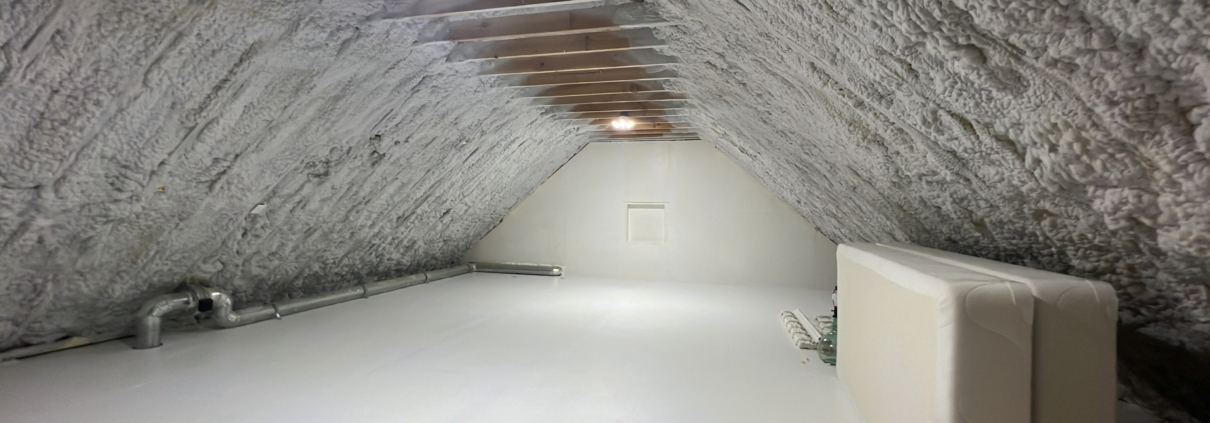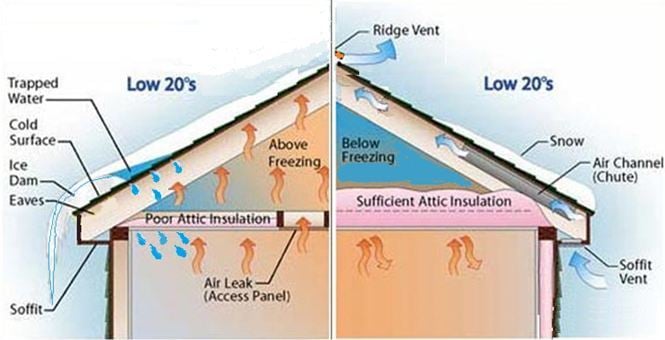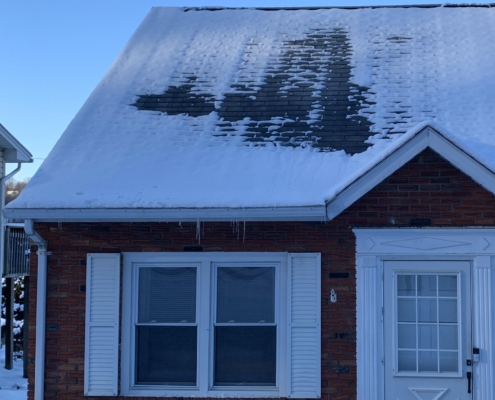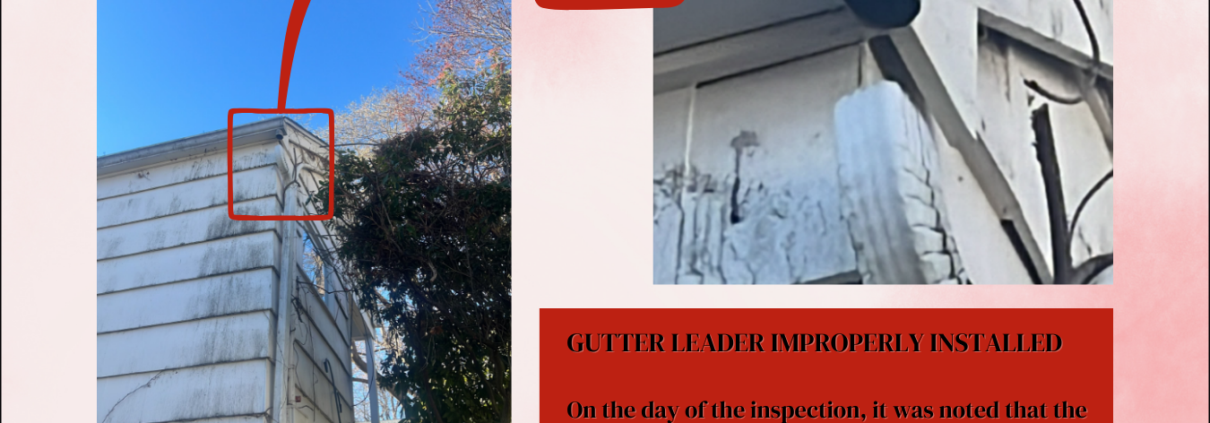Understanding Spray Foam Insulation: Benefits, Installation, and Why It’s a Smart Choice for Your Home
When it comes to keeping your home comfortable year-round, insulation plays a crucial role. If you’re a homeowner or prospective buyer, understanding the different insulation options is essential to making informed decisions. One material that has gained popularity in recent years is spray foam insulation. It offers a range of benefits over traditional insulation materials, from energy efficiency to noise reduction. Let’s explore why spray foam might be the right choice for your home.
What Is Spray Foam Insulation?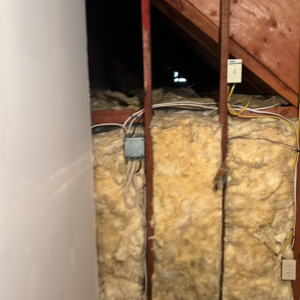
Spray foam insulation is a versatile material that expands when sprayed, filling gaps, cracks, and other voids in walls, attics, and crawlspaces. Unlike traditional batt or blown-in insulation, spray foam creates an airtight seal that prevents air from escaping or entering the home. This makes it one of the most efficient insulation materials available today.
Spray foam is typically made from a combination of two chemicals—polyol resin and isocyanate—that react when mixed and expand into a foam that hardens into a solid structure. There are two main types of spray foam insulation: open-cell and closed-cell foam. Both offer unique benefits, but they are used for different applications in your home.
Types of Spray Foam Insulation
- Open-Cell Foam Open-cell spray foam is lighter and more flexible than closed-cell foam. It expands more rapidly when applied and fills larger gaps. While it offers good insulation, its R-value (the measure of thermal resistance) is typically lower than closed-cell foam. Open-cell foam is a great choice for areas where moisture control is not a primary concern, such as interior walls or attics that are already well-ventilated.
- Closed-Cell Foam Closed-cell spray foam is denser and has a higher R-value per inch than open-cell foam. It acts as both an insulator and a moisture barrier, making it a popular choice for exterior walls, basements, and areas prone to humidity. Its solid structure also gives it added strength, which can help in reinforcing walls or roofs.
Spray Foam Insulation vs. Traditional Insulation Materials
When compared to traditional insulation materials like fiberglass or cellulose, spray foam stands out in several key areas:
- Energy Efficiency: Spray foam insulation provides an airtight seal that prevents heat transfer. Traditional insulation materials often leave gaps, leading to energy loss. By reducing air leaks, spray foam helps maintain a stable indoor temperature, reducing the need for heating and cooling.
- Higher R-Values: Spray foam generally offers higher R-values compared to other materials. R-value measures how effective an insulation material is at preventing heat flow. For instance, closed-cell spray foam can have an R-value of 6.5 per inch, which is significantly higher than fiberglass or cellulose.
- Moisture Resistance: Closed-cell spray foam provides an excellent barrier against moisture, which helps prevent mold growth and wood rot. Traditional materials like fiberglass can absorb water, which diminishes their insulating power.
Insulating Attics with Spray Foam
Attics are often a major source of heat loss in many homes. Insulating your attic with spray foam is a great way to reduce energy costs. A properly insulated attic can keep your home cooler in the summer and warmer in the winter. Spray foam is particularly effective in this area because it expands and fills the gaps, ensuring a tight seal that traditional insulation cannot achieve.
In attics, spray foam can also help prevent air infiltration, which can lead to drafts. Since heat rises, uninsulated or poorly insulated attics allow warm air to escape, increasing the workload on your heating system. Spray foam insulation ensures that this warm air stays in the living spaces where it’s needed most.
What Is a Conditioned Space?
A conditioned space is an area of your home that is actively heated or cooled to maintain a consistent, comfortable temperature. Common conditioned spaces include living rooms, bedrooms, and kitchens. These areas typically have insulation to retain the temperature, keeping your home energy-efficient.
In contrast, unconditioned spaces like attics, basements, and crawlspaces are not heated or cooled in the same way. Spray foam insulation is particularly beneficial in these areas as it helps transform an unconditioned space into a semi-conditioned space by preventing air infiltration, which leads to greater comfort and energy savings.
The Importance of Roof Ventilation
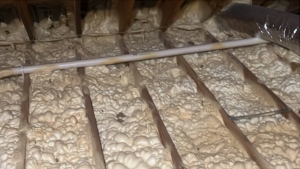 Roof ventilation is essential to ensuring that moisture doesn’t build up in your attic or other areas of your home. In the absence of proper ventilation, trapped moisture can lead to mold growth, damage to insulation, and structural issues.
Roof ventilation is essential to ensuring that moisture doesn’t build up in your attic or other areas of your home. In the absence of proper ventilation, trapped moisture can lead to mold growth, damage to insulation, and structural issues.
Spray foam insulation can help manage roof ventilation by sealing off cracks and gaps where moisture may enter. However, it’s important to note that while spray foam can seal gaps, proper ventilation should still be maintained to ensure airflow and moisture control. A well-ventilated attic is a healthy attic, and spray foam insulation can be used in conjunction with ventilation systems to keep air quality at its best.
Mechanical Systems in Unconditioned vs. Conditioned Spaces
Mechanical systems, including HVAC equipment, water heaters, and ducts, can significantly impact a home’s energy efficiency. When these systems are located in unconditioned spaces, they are more susceptible to temperature fluctuations. This increases the workload on your HVAC system, leading to higher energy consumption and less consistent indoor temperatures.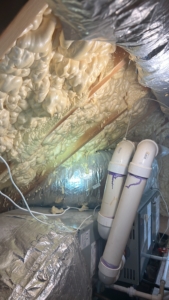
By moving mechanical systems into conditioned spaces, you can help improve energy efficiency. Spray foam insulation ensures that the spaces where these systems operate are kept at a stable temperature, reducing strain on your HVAC equipment and improving overall system efficiency. This can extend the life of your equipment. Additionally, when mechanical systems are properly insulated, your home remains more comfortable with fewer temperature fluctuations.
Sound Insulation with Spray Foam
In addition to its thermal benefits, spray foam can contribute to soundproofing your home. The density of closed-cell spray foam helps reduce noise transmission between rooms, making it a great option for homeowners looking to increase privacy or minimize sound disturbances from the outside. It’s particularly useful in shared walls, home theaters, or noisy areas like near highways.
Is Spray Foam Insulation Right for You?
Spray foam insulation offers numerous benefits over traditional insulation materials. It’s energy-efficient, moisture-resistant, and versatile enough to be used in a variety of spaces in your home. Whether you’re looking to improve your attic insulation, reduce your home’s energy consumption, or create a quieter living environment, spray foam could be an ideal solution.
By understanding the various benefits and applications of spray foam, homeowners and prospective buyers can make informed decisions about this effective insulation material. If you’re considering spray foam insulation for your home, it’s always a good idea to consult with a qualified professional to ensure proper installation and maximum efficiency.
Give Us a Call
Whether you’re looking to buy a home or need a professional inspection to assess your property’s condition, reach out to On Point Home Inspections today. Our expert inspections empower informed home purchases and provide practical recommendations to help maintain your home in excellent shape.
AI-Assisted Content Notice: This blog post for On Point Home Inspections was created with AI assistance. While we strive for accuracy, the content is for informational purposes only and should not replace professional home inspection services. We recommend consulting a qualified inspector for specific property advice. On Point Home Inspections does not guarantee the accuracy or reliability of this AI-assisted content.

